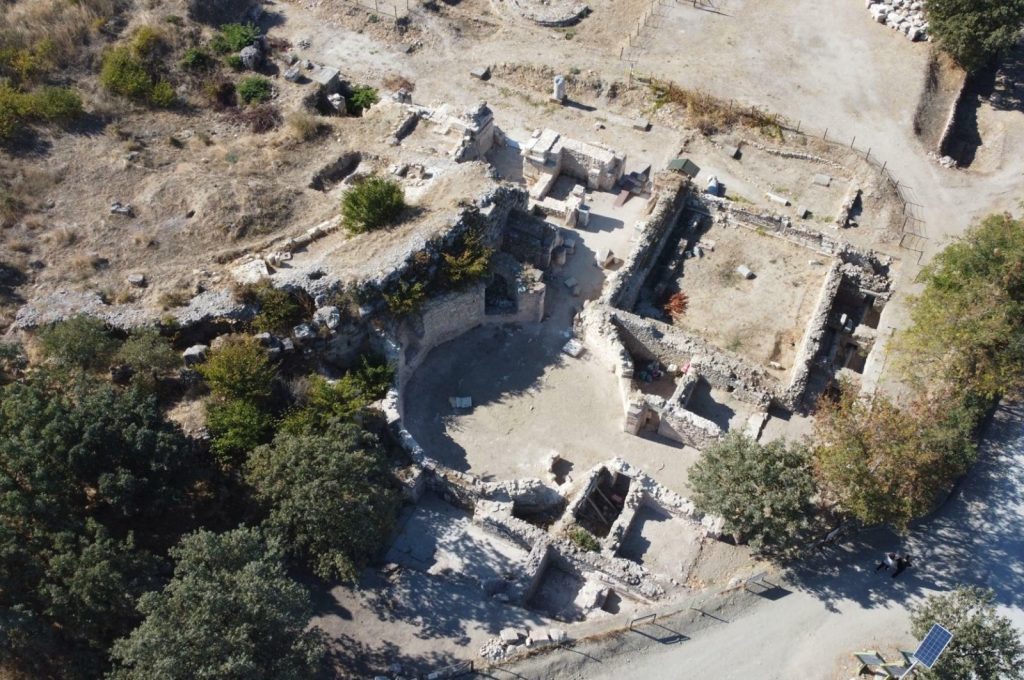In the Aegean region of Türkiye, near Dalyan village in the Ezine district of Çanakkale, restoration work on a 1,850-year-old polygonal structure continues as part of efforts to preserve the ancient city of Alexandria Troas. This port city, which dates back approximately 2,400 years, holds significant archaeological value, and recent excavations and restoration projects aim to return the structure to its original form.
The excavation at Alexandria Troas is being carried out by a 30-person team under the leadership of professor Erhan Öztepe, a faculty member of the Department of Archaeology at Ankara University. The team is working under the permission and financial support of the Ministry of Culture and Tourism, the General Directorate of Cultural Heritage and Museums, the Çanakkale Governorship, Ankara University, and IÇDAŞ A.Ş. Their efforts are focused on the polygonal structure, one of the most important and distinctive buildings within the ancient city.
Professor Dr. Öztepe explained that the restoration of the polygonal building has been a multiyear effort, with significant progress made this year. In the summer of 2024, augmented reality technology was used to virtually reconstruct the building, offering the public an opportunity to explore its ancient form digitally.
Over 1,200 visitors experienced the virtual reconstruction during this event. However, the team’s work does not end there, restoration efforts are now concentrated on reinforcing the building’s walls, addressing gaps in the joints, and repairing the plasterwork, which has been damaged by both human and environmental factors over time.
The ongoing restoration work on the interior of the polygonal building is nearly complete, according to Dr. Öztepe. “The restoration of the interior is almost finished, and we are now focused on additional structures associated with the 12-cornered building,” he stated.
The project has seen an extension of working hours this year thanks to funding provided by the Ministry of Culture and Tourism as part of its “Legacy to the Future” project. This financial support has allowed the excavation and restoration work to continue into the latter months of 2024, with plans to keep the team working on-site through December, depending on weather conditions.
The polygonal building, which dates back approximately 1,850 years, was originally constructed in the middle of the second century A.D., during the reign of Roman Emperor Hadrian. Over the centuries, the structure likely served various purposes.
Öztepe suggests that after functioning for many years, it may have been repurposed for religious use in the fourth century, following the rise of Christianity in the region. Historical evidence suggests that in its later stages, the building’s entrances were closed off, leaving only the northern entrance accessible, possibly transforming it into a place of worship.
Öztepe emphasized that the polygonal structure remains an important focal point of research. “We are continuing to investigate the structure’s original function and significance,” he said. “This building is still the subject of ongoing debates regarding its use throughout history.”
In addition to the restoration work, digital and three-dimensional reconstructions are being developed to ensure the preservation of this important heritage site for future generations. These efforts will allow visitors from around the world to experience the grandeur of Alexandria Troas in a way that combines the latest technological advancements with the rich historical legacy of this ancient port city.


